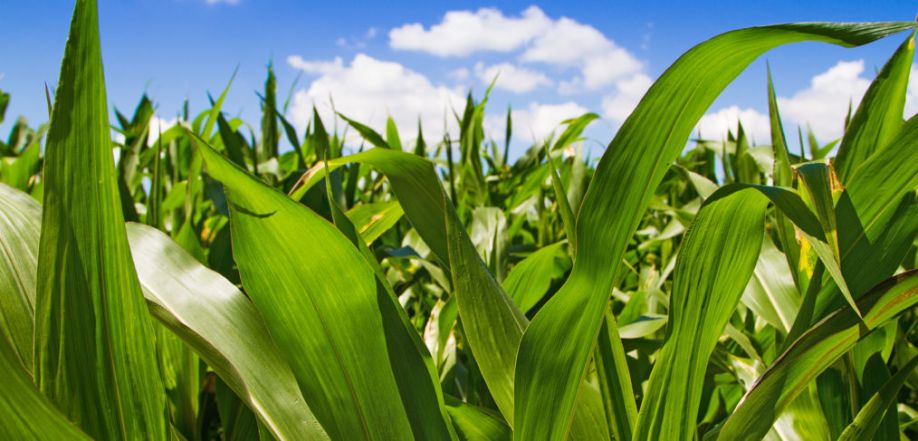If 29-year-old me were here in the present day looking at whats going on in agriculture, I cant help but wonder what would be going through my mind—“Do I believe what I am seeing?” or “Am I inside a Sci-Fi movie?”
A Tale of Two Sciences—Artificial Intelligence Meets Agronomy
Dr. Harold Reetz | IntelinAir
If 29-year-old me were here in the present day looking at what’s going on in agriculture, I can’t help but wonder what would be going through my mind—“Do I believe what I am seeing?” or “Am I inside a Sci-Fi movie?”
Plant breeding, soil science, entomology, and meteorology are all branches of science we frequently use in the same context with agronomy. Artificial intelligence has not typically been on that list, but we’re learning more and more that artificial intelligence and agronomy are a pretty good match up of sciences.
As a crop physiology graduate student at Purdue University in the mid-1970s, my PhD thesis project was a model that analyzed the effects weather had during various growth stages of a corn crop. The project included a mix of computer and manual data capture—pretty advanced for its time, but quite archaic by today’s standards.

Fast forward 40 years, and it is clear agronomy has come a long way over the past few decades. Today we’re able to put an entire field under an X-Ray machine—metaphorically speaking—thanks to the convergence of farming’s biological and physical sciences with such new partners as artificial intelligence, computer vision, and robotics. It’s all now part of 21st-century agronomy. This visualization is only possible because of the integration of the tools that deliver these solutions: super computers, high-resolution camera lenses, data storage devices, deep learning and neural networks, temporal and spatial analysis, and spectral signatures and pattern mapping.
An Agronomist’s Dream Becomes Reality
Our long-held dreams of using satellites and computers to guide crop and soil management are now a modern-day reality that goes far beyond what we had ever imagined.
Precision agriculture made its grand entrance in the 1990s, giving us our first glimpse of the high-tech future of farming. Farmers were slow on the uptake, however. I think back to our inaugural InfoAg Conference in 1995, and farmers’ adoption of precision ag practices at the time was maybe a mere 20 percent. Those statistics slowly and steadily began improving after the turn of the century; but despite wider adoption, we hit a threshold with precision ag where it needed some gas to boost it into the next dimension.
I joined the IntelinAir team because I saw the developers and engineers accomplishing tasks we could only dream about doing 20 years ago, and it’s that boost of power that I believe can take precision ag to the next level.
Site-specific, precision farming has always involved relating different layers of information based upon their geo-referenced data points. In a 1994 sketch, I illustrated that concept as a series of information layers underlying a field with various crop production practices. Introduction of GIS has allowed us to geo-reference all aspects of the production system, so we can track everything that happens to a crop and how all of these factors vary across the field.
In reality, there are hundreds of possible data layers that can be related in time and space to guide crop management decisions. But in the early years of precision agriculture, we didn’t have the computing power to capture, store, or analyze this much data.
Computers today are able to see what’s invisible to the naked eye. Cloud networks are able to store infinite amounts of data. Sophisticated algorithms are able to interpret that data and use models to understand and predict how the crop will vary across the field. My mobile phone today has more power as a decision-making tool than was available on my 1990s desktop computer.
Data on Every Single Plant
In the 70s and 80s, we had access to county-level data, at best. Today, data points are collected by a wide range of sensors, and many decisions are made with algorithms and models that guide a wide range of controllers. The density of the sampling is on a finer grid that until now was inconceivable. The granularity of the data plus the frequency with which we’re able to capture it gives us more data than ever to work with. Instead of measuring just one particular section of a field, we can gauge health, stress, and nitrogen deficiency for every single plant.
With its aerial imagery analytics, IntelinAir today is capturing imagery data down to 2-15cm resolution and collecting millions of data points from a single field. These data can be related to static data like soil survey information and weather that are two of the key factors in within-field variability.
IntelinAir’s AgMRI™ Intelligence System can integrate data from various sources (soil, weather, planter, yield monitors) and relate it back to the imagery data in real time using algorithms that explain the variability—why yield is different in one area of the field over another. Once the anomalies are detected, the agronomist and farmer can investigate further to pinpoint the cause. This understanding of what causes yield variability within a field is the first step toward really using site-specific precision agriculture technology in the way it was intended—to make better-informed management decisions.
Past, Present and Future
Is this the farm of the future we envisioned back then, or is this the stuff movies are made of?
Contrary to what it sometimes may seem, it’s not science fiction. These are the real-life, high-tech methodologies IntelinAir and other companies are bringing into agriculture to make processes more efficient and lead to better decisions for improving yield and productivity.
What my colleagues and I worked on all those years ago (along with so many others around the world before and after us) laid the groundwork for getting to where we are today and where we’re going in the years ahead. I’m excited and proud to be part of the past, present and future of agronomy.
About IntelinAir
IntelinAir is a leading company in the precision agriculture space. We empower farmers by providing them with easy-to-use and actionable expert analysis of high-resolution images from frequent manned flights over their fields.
Farmers use IntelinAir to make data-driven decisions to improve operational efficiency, yields, and profitability, using real-time information in an easy-to-use-format delivered to their phones or tablets.
Currently, IntelinAir is focused on supporting corn and soybean farmers in Illinois, Iowa, Ohio and Indiana, and are rapidly growing our footprint. We are located with dual headquarters in San Jose, CA and Champaign, IL and a local office in Ames, IA. Our team of dozens of renowned PhD scientists, engineers, and agronomists combine the people and technology that put the full power of precision farming into farmers’ control.
The content & opinions in this article are the author’s and do not necessarily represent the views of AgriTechTomorrow
Comments (0)
This post does not have any comments. Be the first to leave a comment below.
Featured Product

